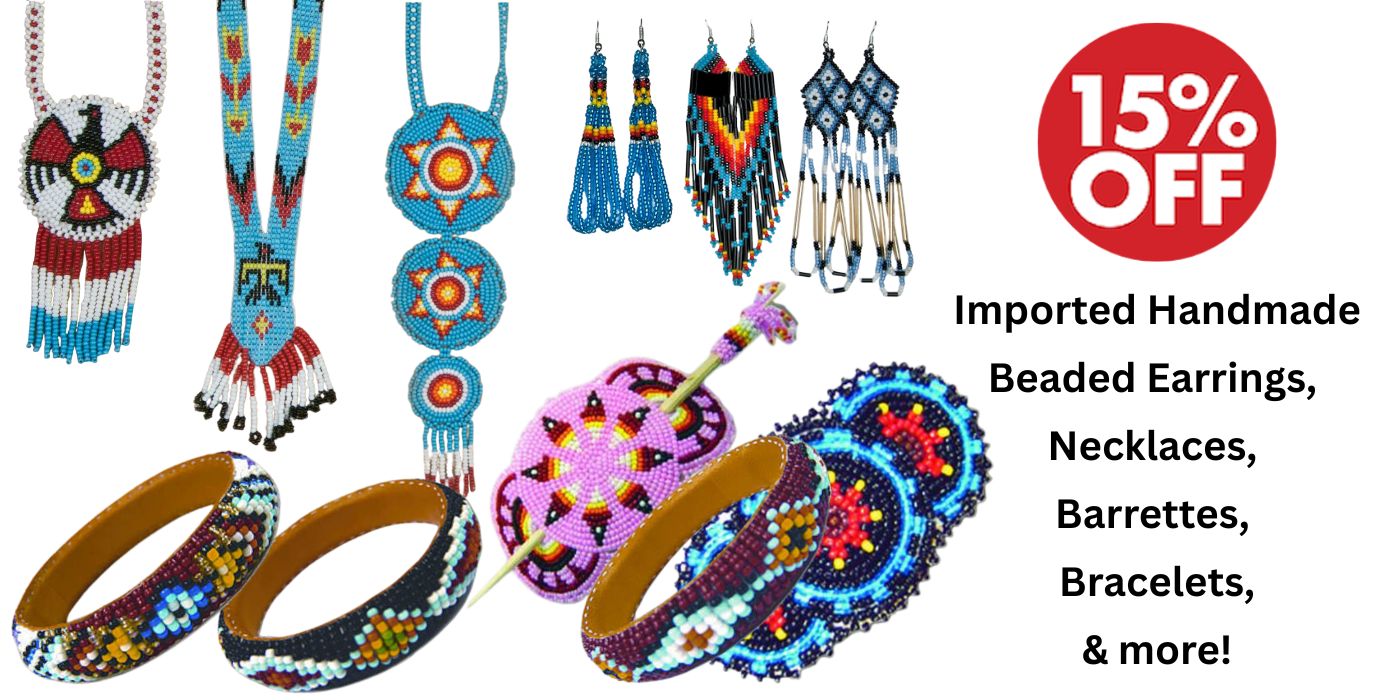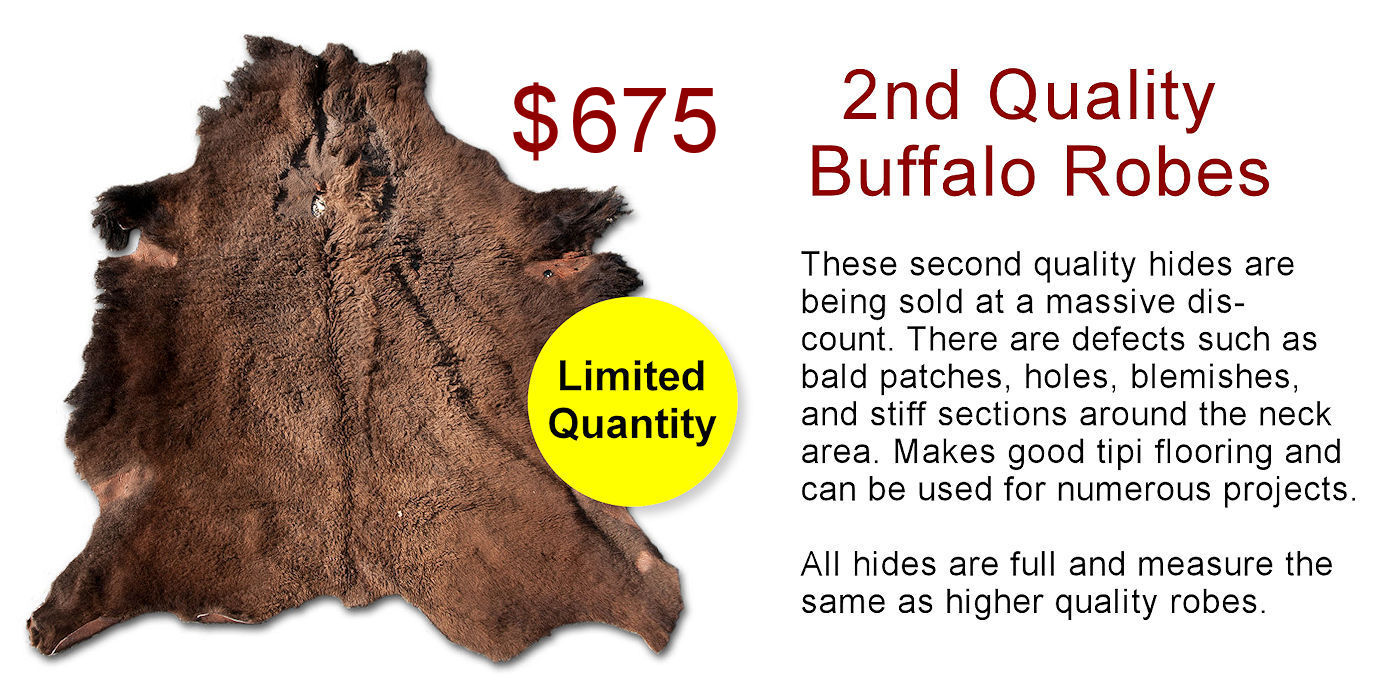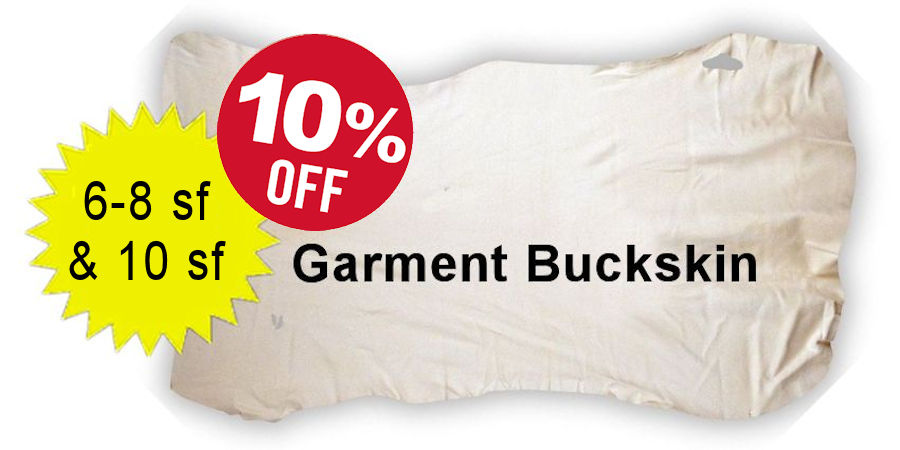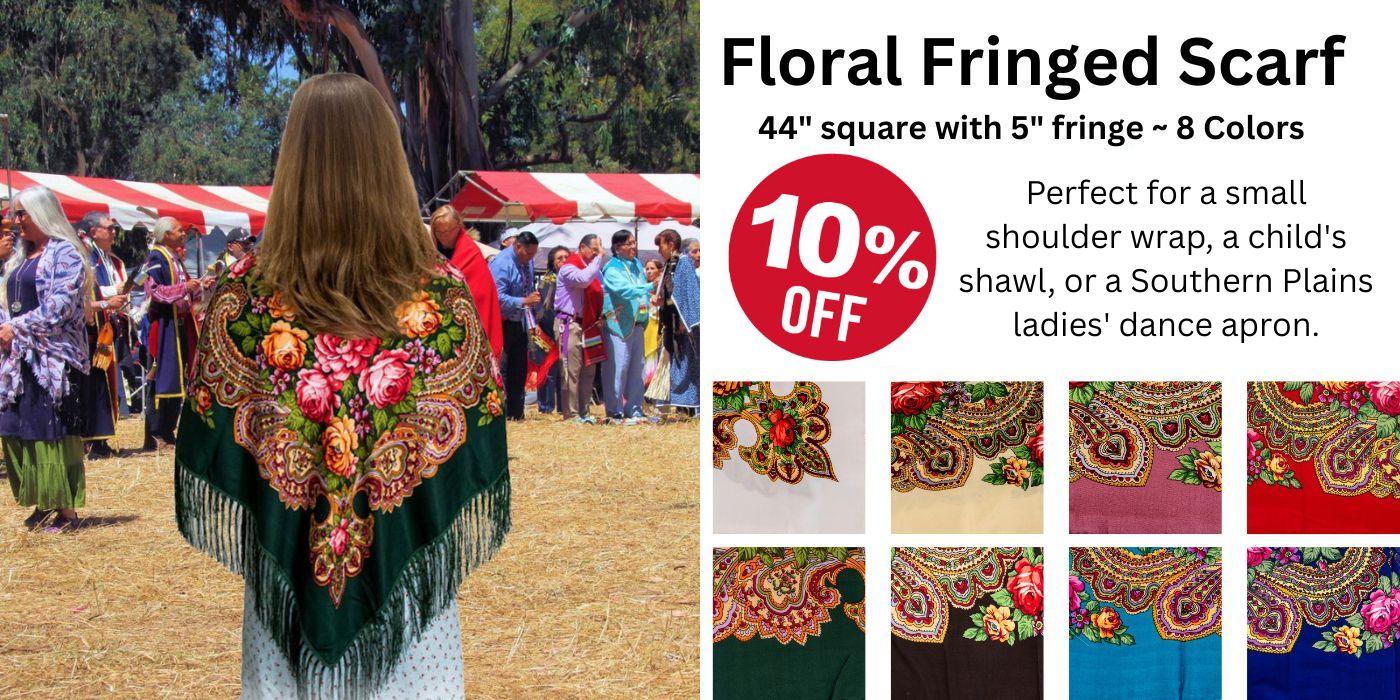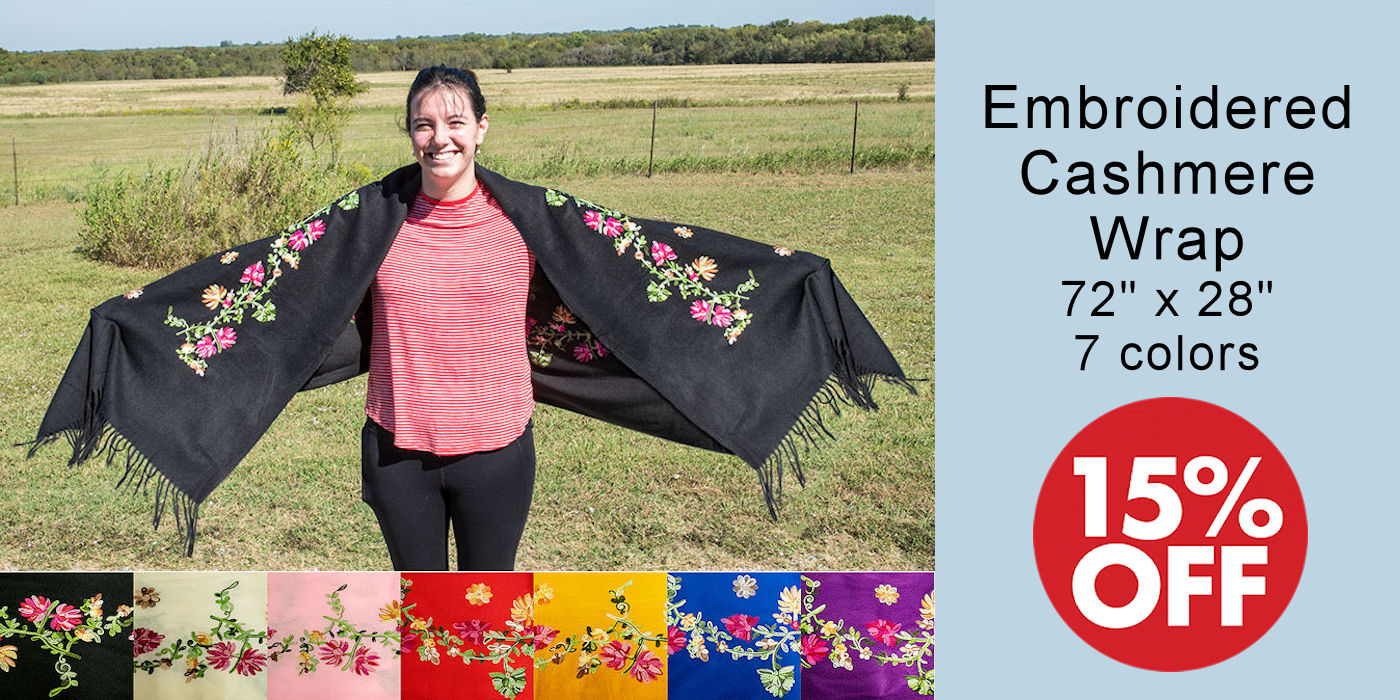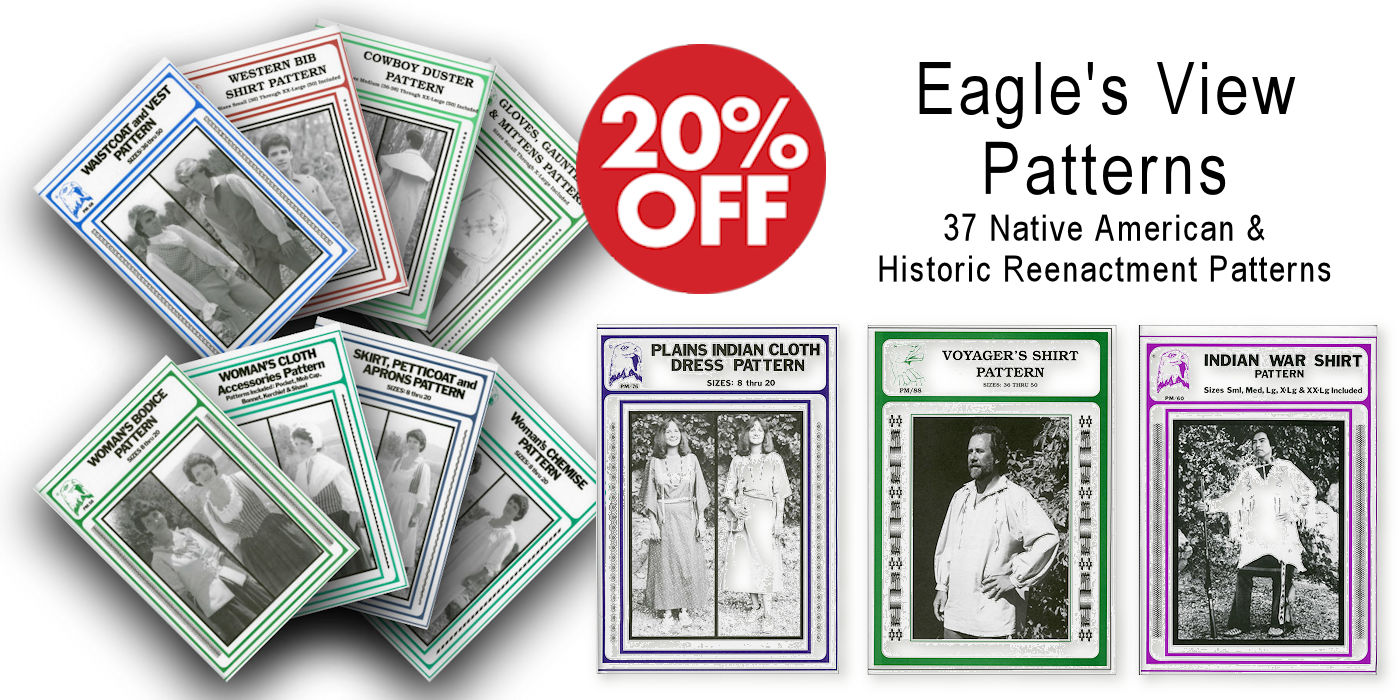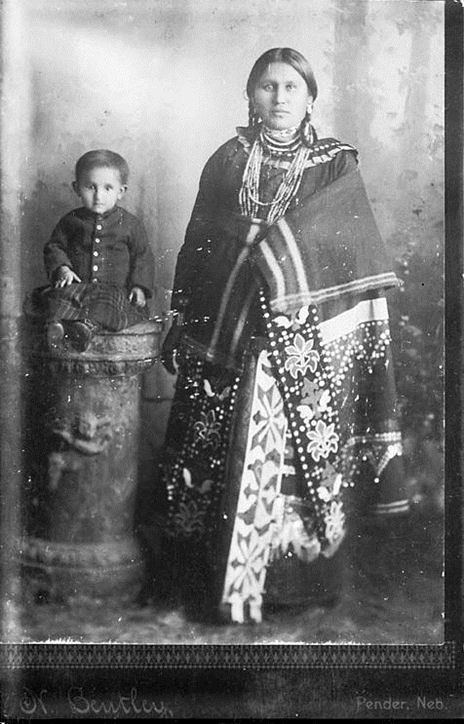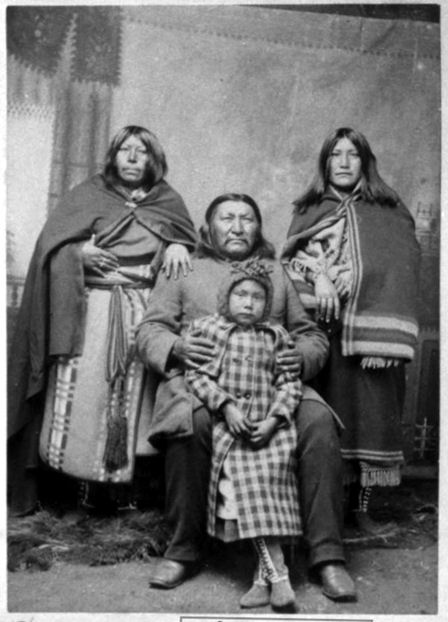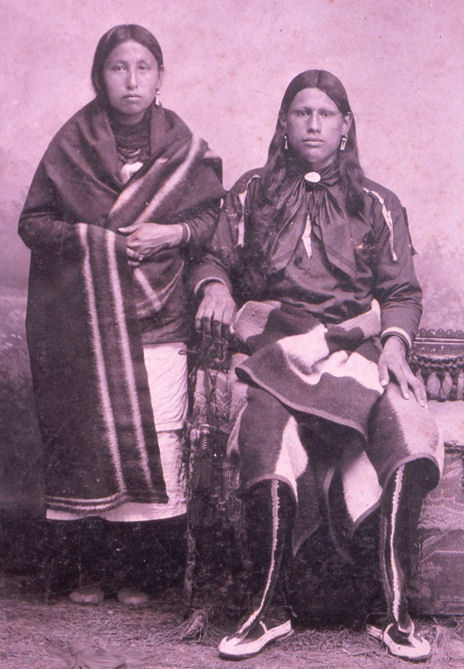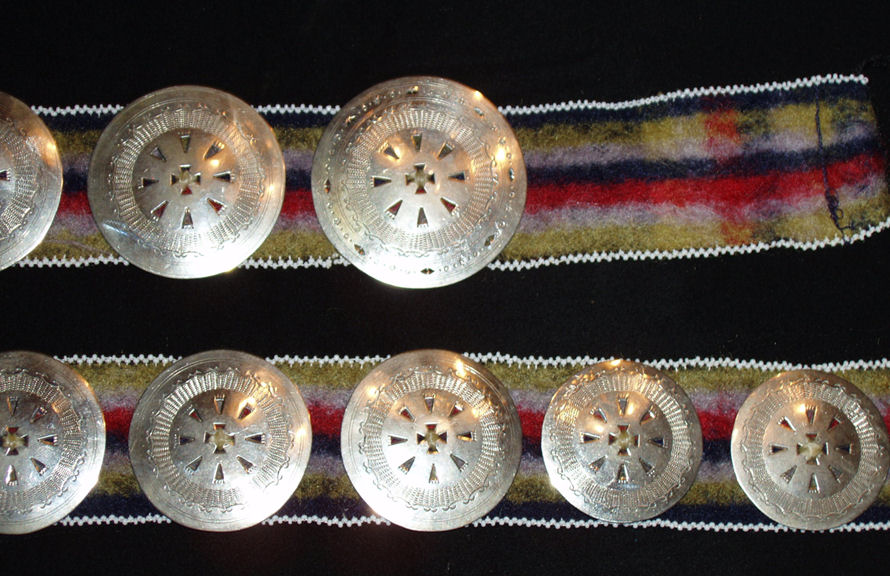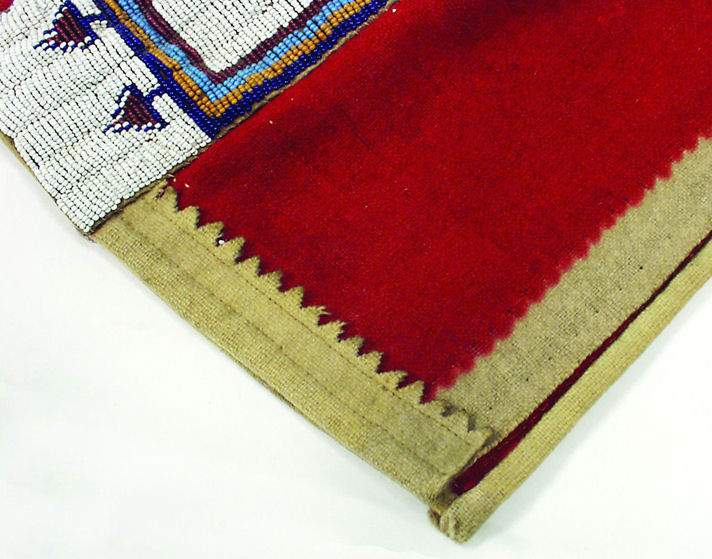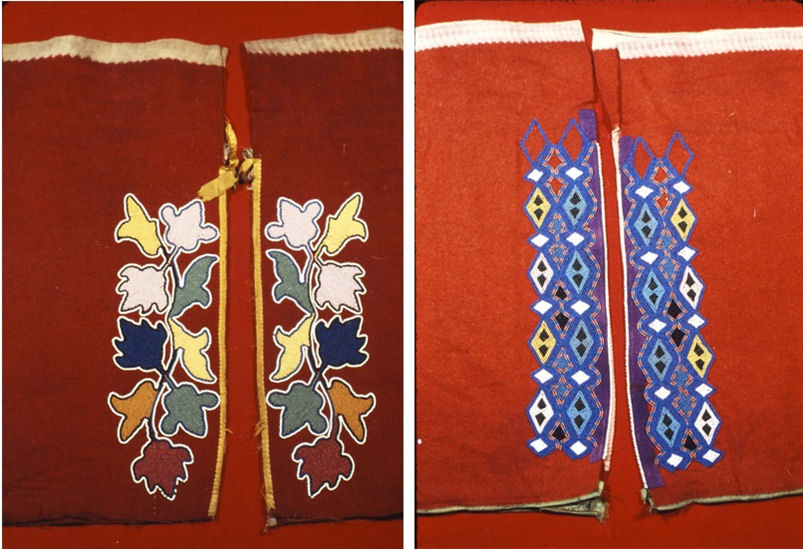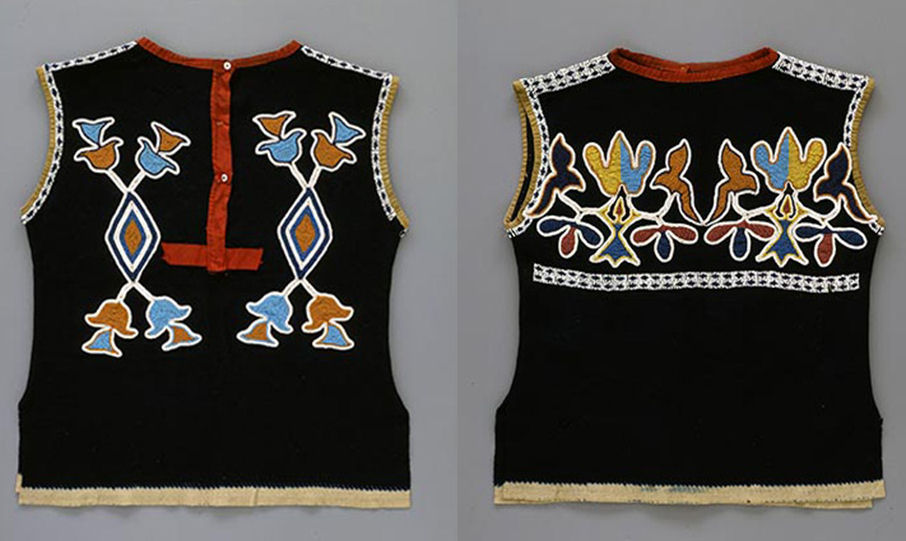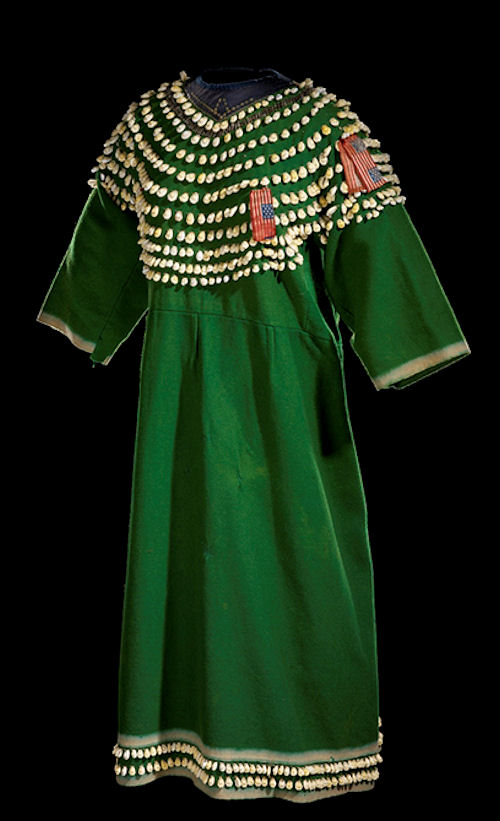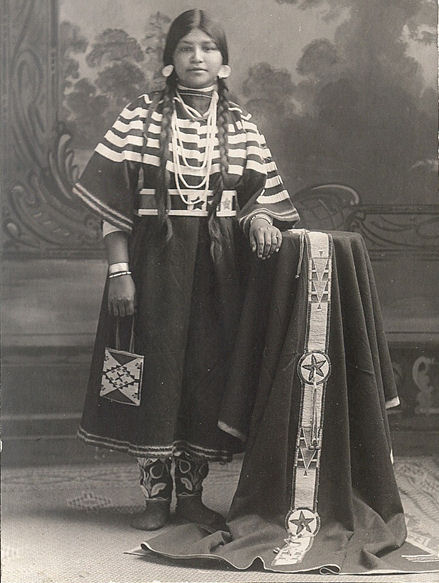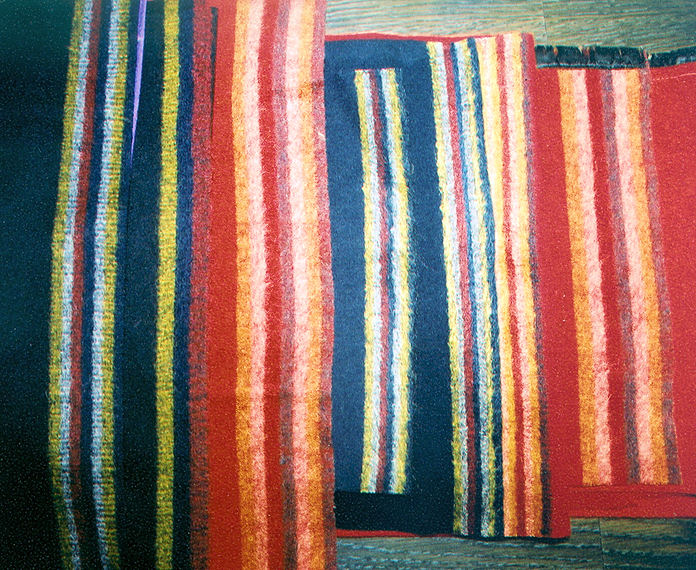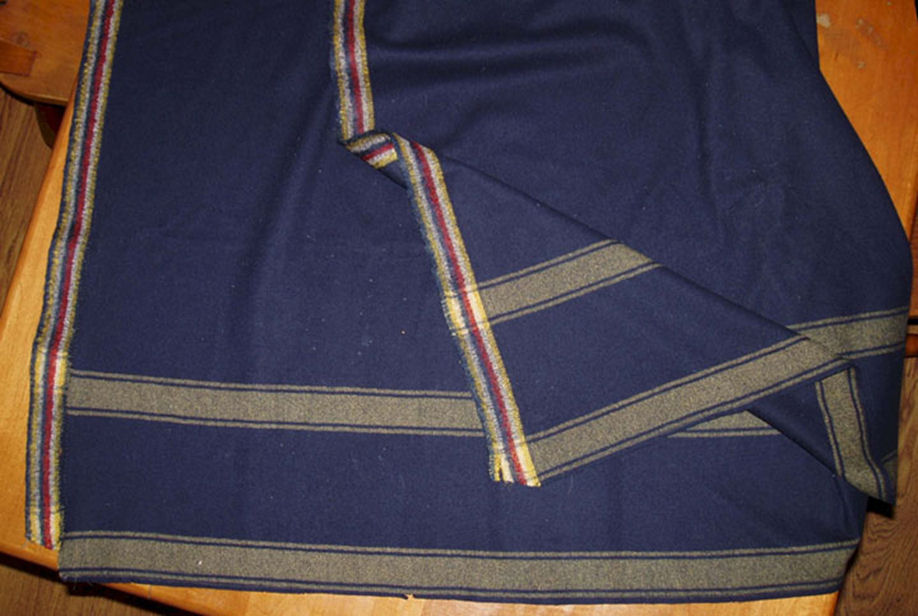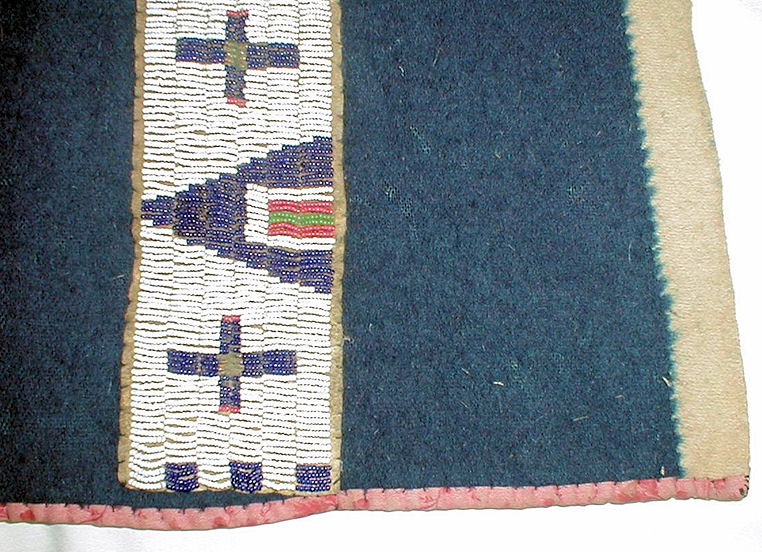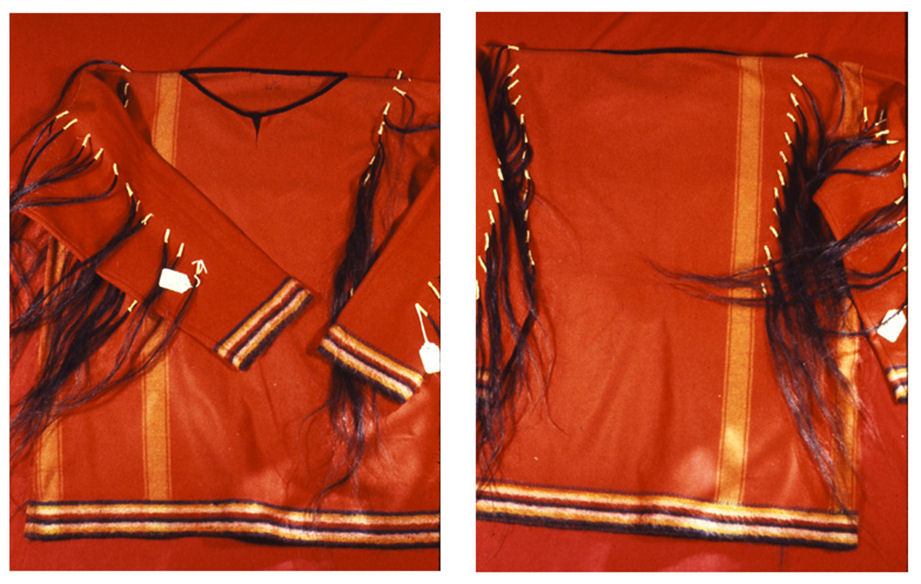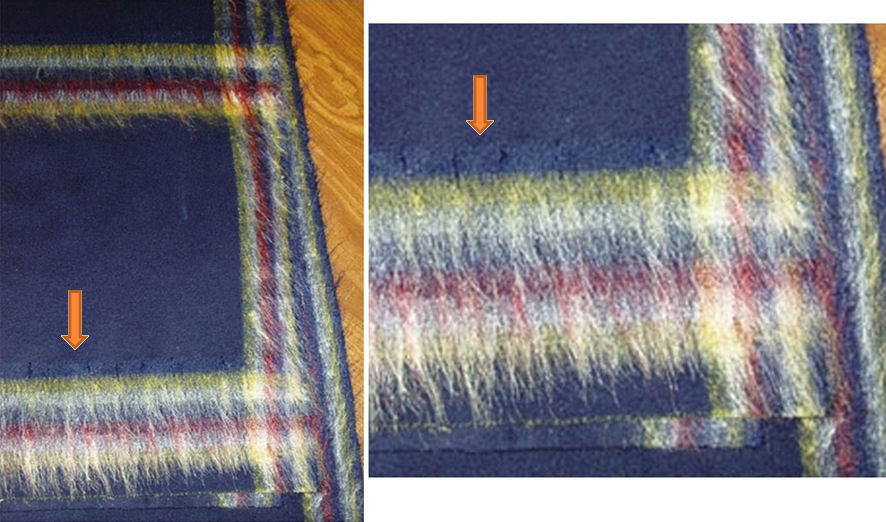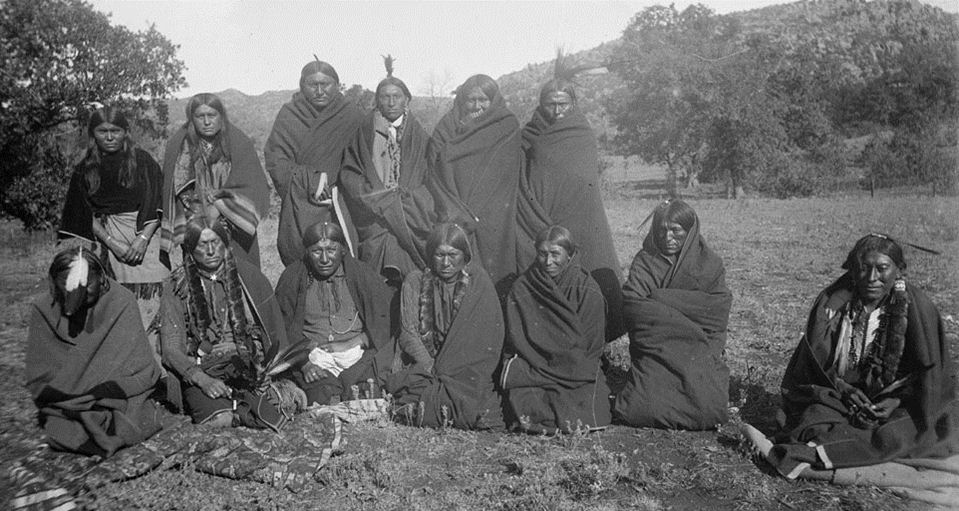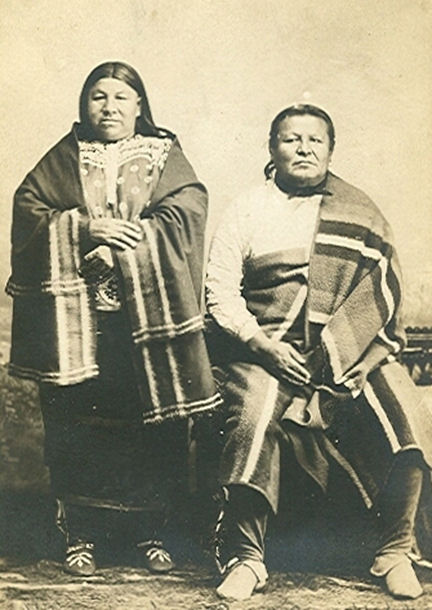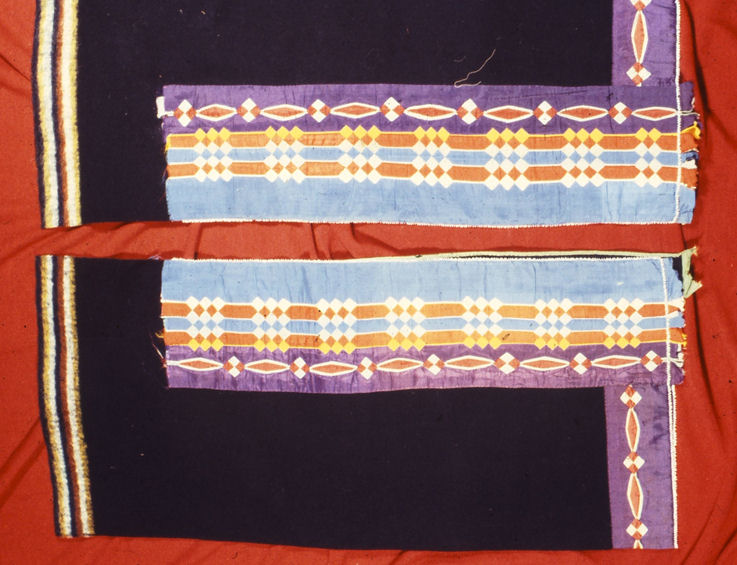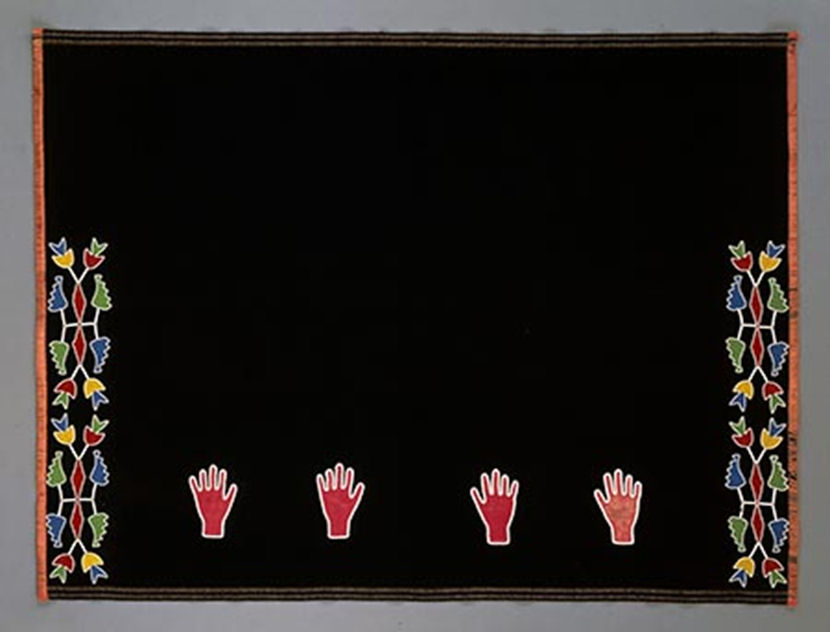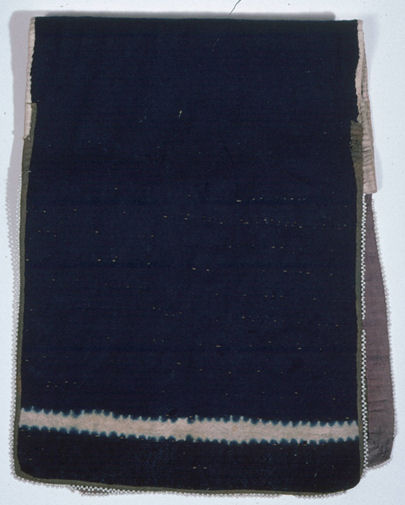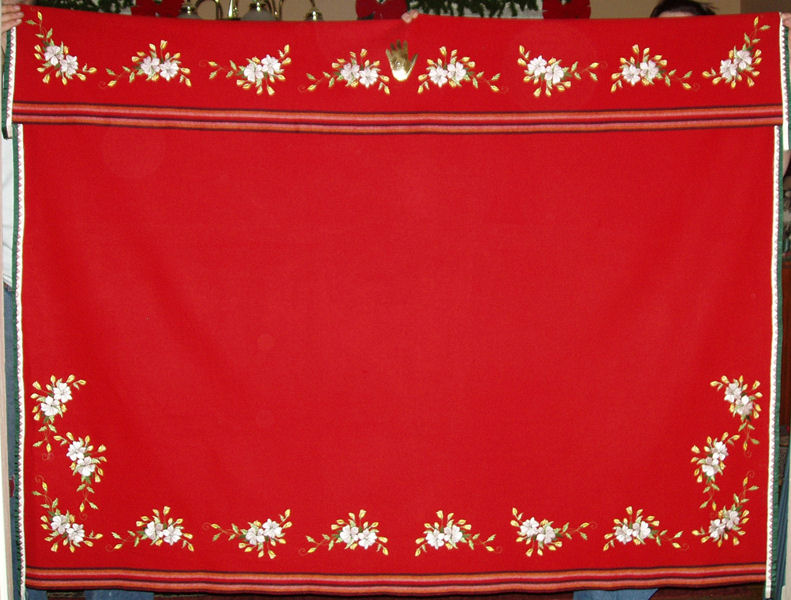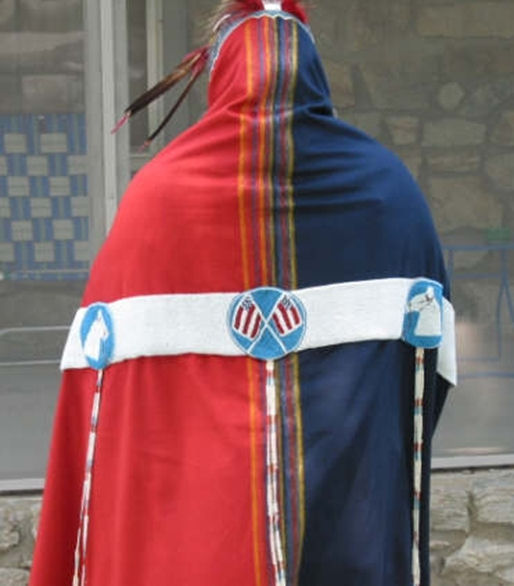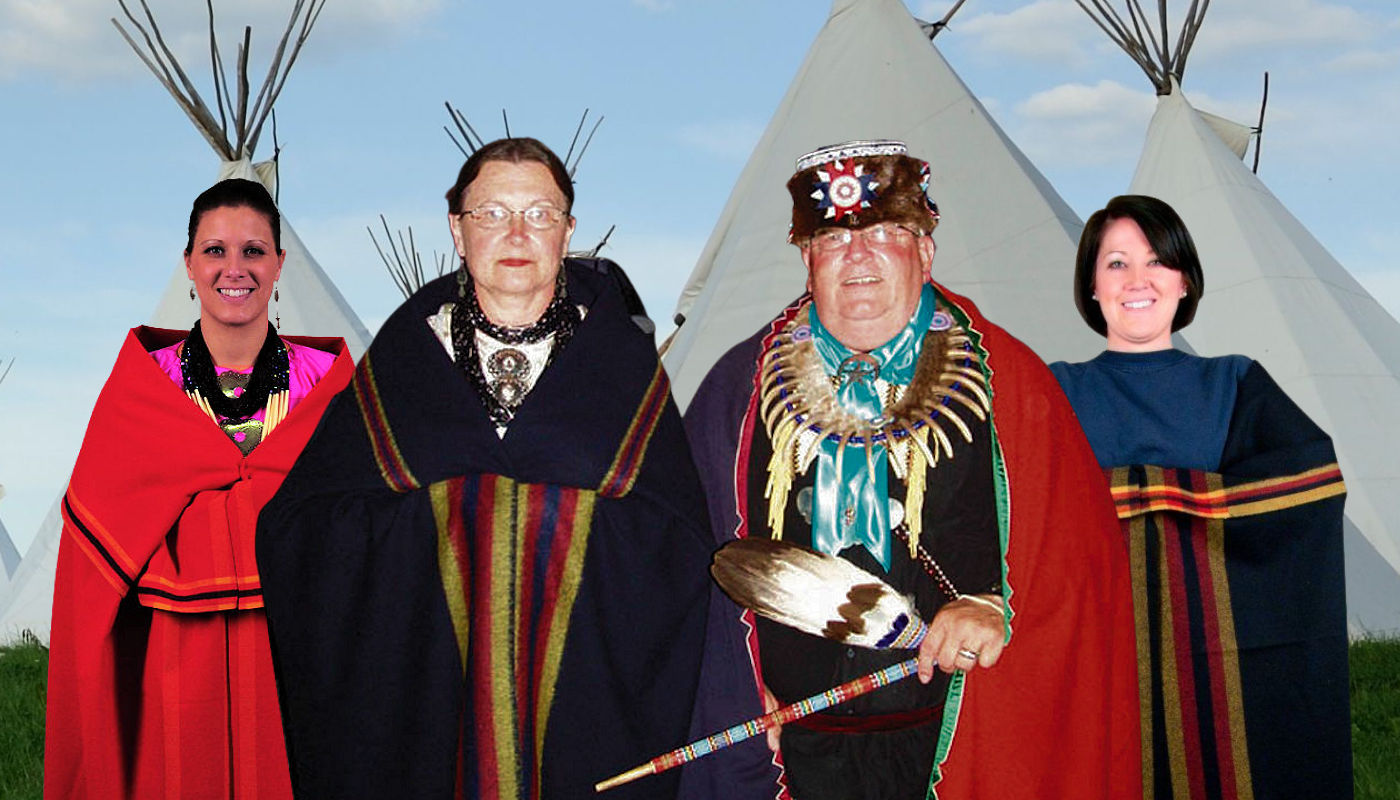

A Visual History of Tradecloth, A Partial Record
Prepared By: Earl Fenner, Tom Parkter, Rex Reddick
© 2008 Three Bags Full
A Visual History of Tradecloth, A Partial Record
Prepared By: Earl Fenner, Tom Parkter, Rex Reddick
© 2008 Three Bags Full
Special Note: This wool tradecloth history article is “UNDER CONSTRUCTION”. The narrative is complete, but there are over 200 images being worked into this article and into a separate photo gallery. Check back to see how it’s coming. If you’re interested in the history of tradecloth, and a demonstration of both its historical and contemporary use, you won’t want to miss it!
INTRODUCTION
This article, A Visual History of Tradecloth, A Partial Record, is an enhancement of the original presentation at the Material Culture of the Plains, Prairie and Plateau Conference (MCPPP), National Cowboy Hall of Fame and Western Heritage Museum, Oklahoma City, Oklahoma, October 16-18, 2008. It is an attempt to show examples of the various types of trade cloth and their use by American Indian people over time.
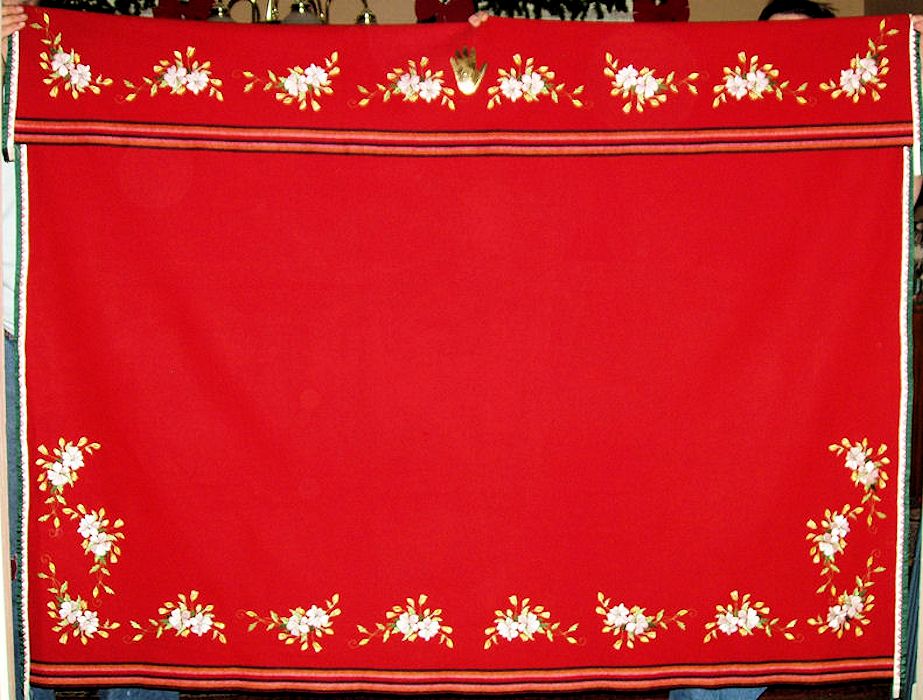
The History of Tradecloth project began with a few scraps of cloth assembled by Tom Parker and placed on a single display board with minimal documentation. This was used for educational purposes for those few people actually interested in the subject. It has since blossomed into four triple boards and now, this presentation.
The examples offered here are seemingly heavy in what is called “rainbow selvage cloth”, an appropriate name for the multi-colored banded selvage edges found on this finely woven product. Collectors have seemingly shunned many stunning items made using this type of cloth. Rainbow cloth is viewed as far too modern and 20th century. However, it was produced in the mid-18th century and reached its pinnacle between 1880 and the 1920’s. It became a standard of quality and status demanded by and traded to numerous Prairie tribes, particularly the Osage, their cognates, and their neighbors.
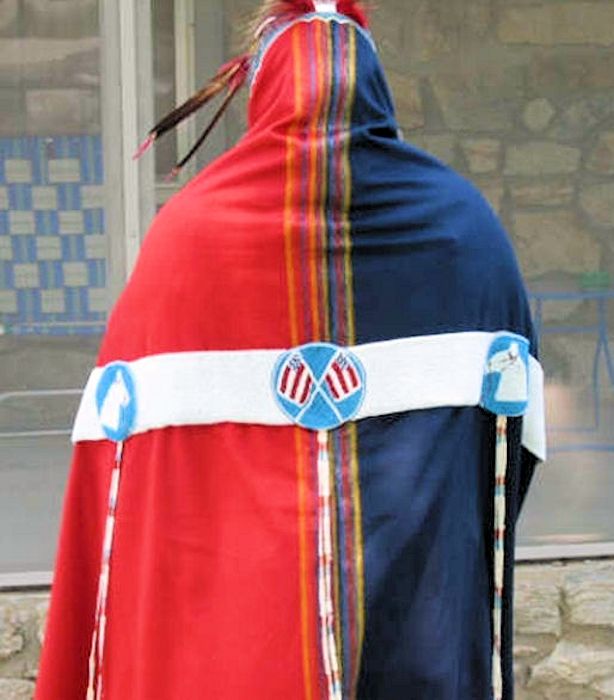
The late Norman Feder once estimated there were probably at least 40 distinct rainbow edges. We have collected and documented examples of most of those, a few of which are shown in this presentation.
Though trade cloth was brought to America by Spanish, French and English traders, the English woolen industry appears to be the prevailing source . Examination of numerous trade manifests indicate a wide variety of cloth products but rarely can one locate with any accuracy a specific description of the selvage edge. The earliest actual examples are edge specimens dating to the early to mid-18th century in the Anders Berch collection, Nordiska Musett, Stockholm, Sweden.
Later, we find correspondence references between cloth purveyors and manufacturers explicitly indicating the “desired” type of cloth demanded by the Indian consumers. Specifically ,this was a woolen cloth in scarlet and indigo with a white or undyed selvage edge or stripe now referred to as “saved list cloth”. It was also produced in green, yellow and purple with the latter being phased out due to lack of demand. One located specimen shows it was also produced in black. The edge was an apparent indicator of quality goods and native consumer tastes rapidly demanded quality.
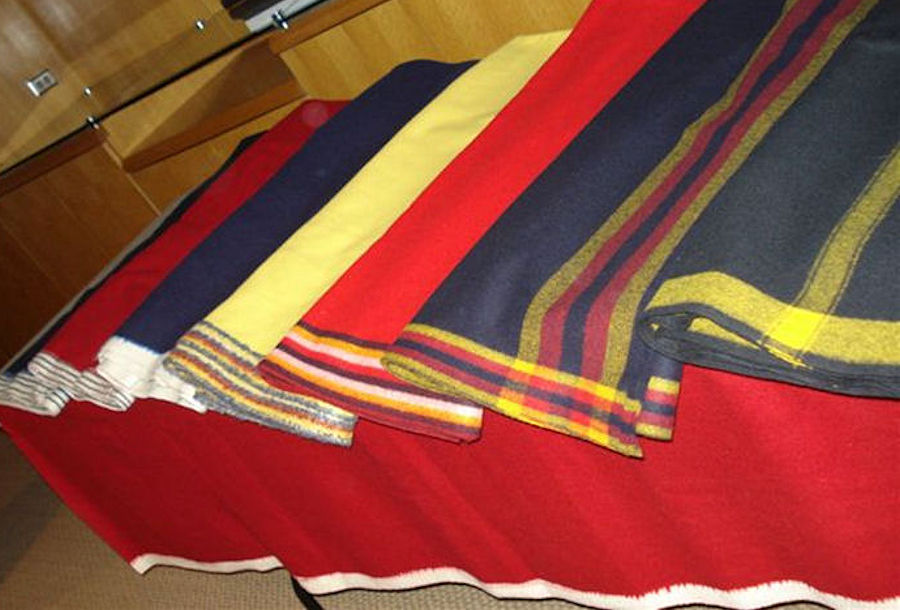
Tradecloth Manufactured by Crazy Crow Trading Post
Though produced with a “rainbow banded edge” in the 18th century, actual examples become evident in museum collections or at least paintings in the mid-19th century and reaching peak demand between roughly 1870 and 1930 and continuing to the present day. This increased use was partially fueled by Osage demand for quality. Once oil was discovered on Osage land in Indian Territory they became the richest people in the world and settled for nothing less than the best. In other areas and at an earlier date native peoples controlled large natural deposits of lead, copper and later coal and uranium but none of these equaled the Osage Oil resources. Thus there was a great rush to fill the demand for extremely fine quality cloth for the Osage and their neighbors.
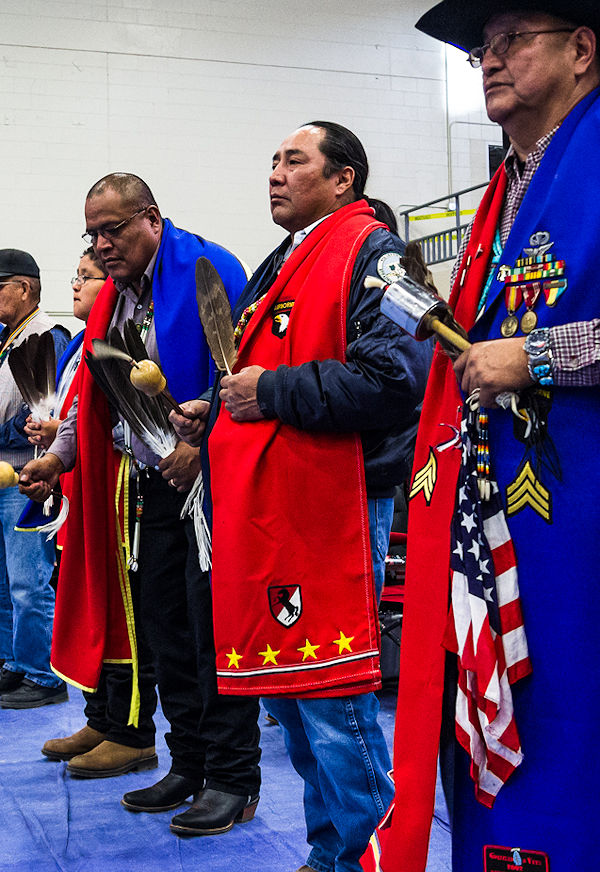
Credit Above Photo: dbking,CC BY-SA 3.0, via Wikimedia Commons
Osage sources suggest the early 20th century cloth was manufactured in France. At least to the Osage the color banded selvage was an indicator of fine quality goods. These colored bands not only served as a decorative feature but as an indicator of both wealth and status to be openly displayed and to be given away as gifts to visitors from neighboring tribes.
Even today fine examples of “old” blankets, skirts and traditional dance clothing with the prominent colored edge are displayed as a matter of pride. Though trunks containing these cherished examples may only be opened once or twice a year and their contents used during the traditional June I’n lonshka at Grayhorse, Hominy and Pawhuska Districts, it is a visual feast to behold these proudly worn family heirlooms.
The demand for colored edge cloth continues and reproduction to meet this demand has been attempted by several purveyors since about 1960. However, the feel, texture and tight weave of the old cloth cannot be produced by modern methods, at least not in any sustained quantity, without investing a large amount of money for production. In mill terms, a “piece of cloth” is generally 62 to 65 yards in length and a mill will not set up operation to produce just one piece or even less than ten pieces due to the operational cost. One purveyor solved that problem by purchasing his own small mill. Another has cloth being produced in Europe and elsewhere but again in limited quantity. Fine quality cloth is still manufactured in England but it is manufactured for tennis ball and billiard table coverings. Fine uniform cloth and suiting is also manufactured there but without the rainbow edge. It is the colored banded selvage edge and fine texture that is important . . . as it has always been.
Rainbow Edge Broadcloth
The reasons for the colored “bands” have long been debated. Wilmott (2005: 216) refers to these as “heads” or head stripes. However, this term may only apply to the striped saved list cloth that was traded by the Hudson Bay Company.
“The number of heads (‘hds’) refers to stripes in the list that were created by the addition of colored warp yarns. These markings were formerly part of a European-wide system of coloured list markings that indicated the quality and type of the cloth.”
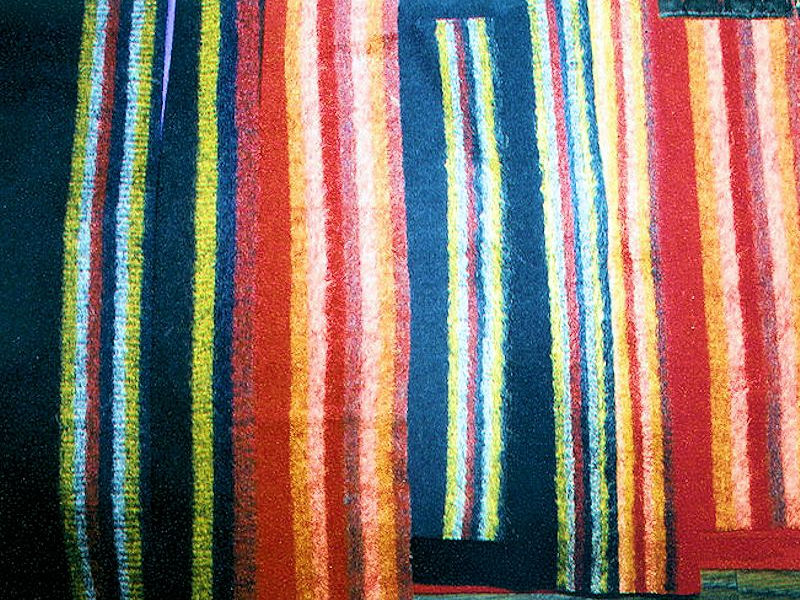
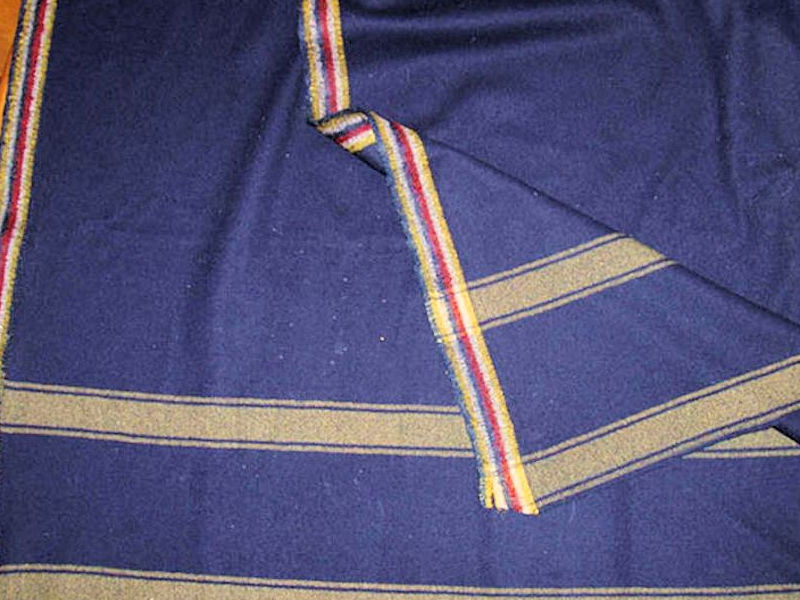
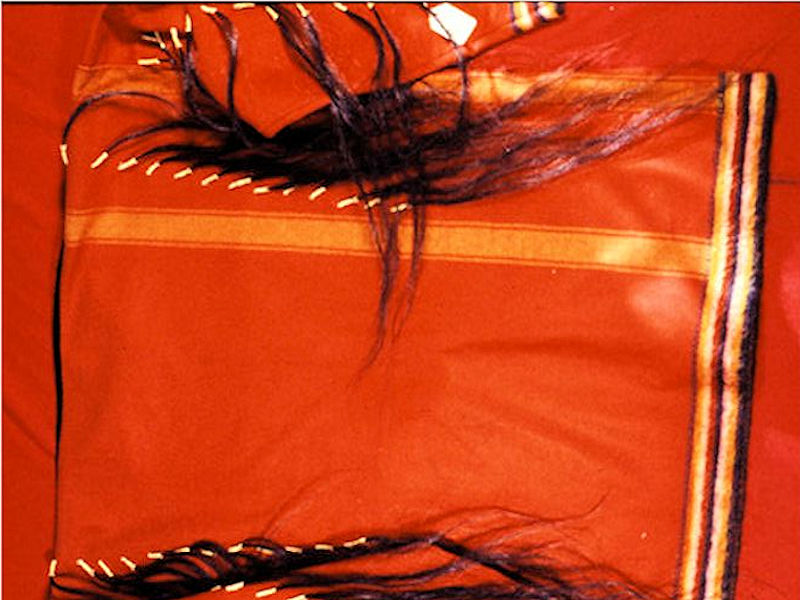
In the many examples shown here we find a wide variety of colored stripe width and color band combinations. When available at the time of photography a ruler is shown to indicate the individual stripe dimensions as they do in fact vary. Differentiation between black and very dark navy blue cloth was dependent on lighting at the time of photography. Bands are counted from the edge of the cloth. Some bands were shaved during the manufacturing process and on some the long nap was simply worn away due to use. The Indian people seemed to prefer the long fuzzy nap on the selvage edge.
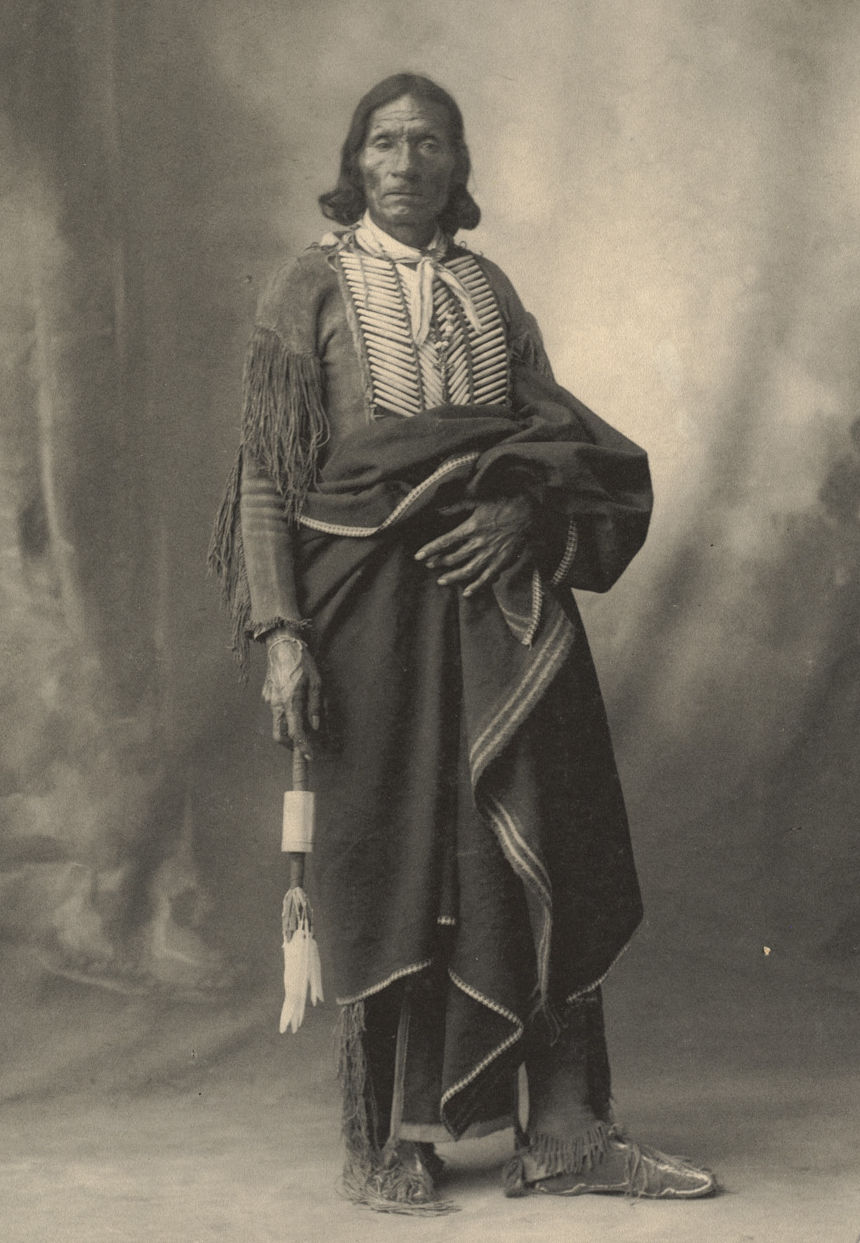
Credit Above Photo: Frank Rinehart, Public domain, via Wikimedia Commons
Broadcloth Blankets
The American War Mothers was organized September 29, 1917, in Indianapolis as an offshoot of the work they did during WWI for the Food Conservation Committee. At its inception it was a dying organization because membership was limited to mothers whose sons and daughters served in the Armed Forces between April 6, 1917 and Nov 11, 1918. Its Charter was extended by Congress to include WWII, Korea and subsequent military actions. It became an organization that worked for the welfare of the members of the Armed Forces, assisted the wounded and incapacitated and promoted friendship and understanding between America and the Allies. .The first Indian chapter of American War Mothers called Cannonball Chapter was formed at Ft. Yates, N.D. on September 13, 1920. Officers were: War Mother, Mrs. Bear Ghost; Secretary, Mrs. Basil Two Bears; Treasurer, Mrs. Fast Horse. (Unknown, 1920). At the 1923 National War Mothers Convention held in Kansas City, Mrs. Two Bears was honored because she lost a son during WWI.
Several chapters formed among Oklahoma tribes during WWII; Pawnee, Otoe, Kiowa, Cheyenne, Osage, Comanche, etc., either known as War Mothers Organizations or Service Clubs. Each had their own songs and distinctive insignia and many mothers made blankets honoring their sons and daughters which were worn during the War Mothers or other dances held in the various communities.
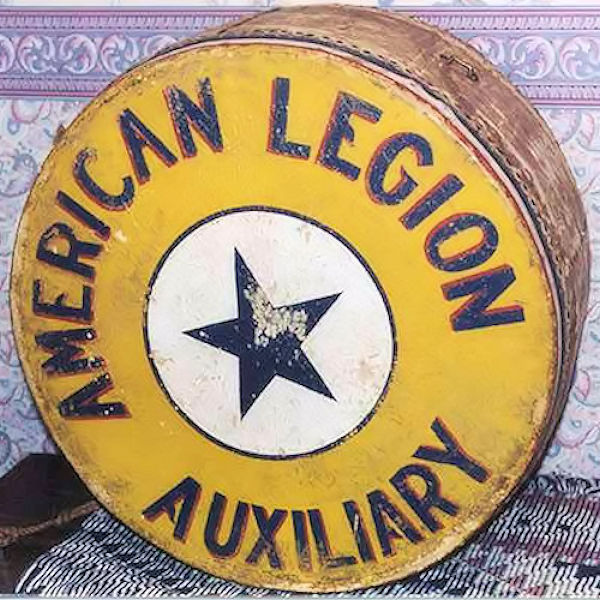
Louie Toyebo, a Kiowa, is credited with composing about 30 songs for the Kiowa War Mothers. These are beautiful round dance songs that have texts speaking to the hardship of the soldiers heroic actions and to comfort the mothers and other relatives while their children were over seas fighting for America. The Ponca and Osage also have a multitude of Soldier Dance songs composed for the same .purpose as do other tribes. James Anquoe composed the 45th “Thunderbird” Division song in the Kiowa language. Other tribes added their own words to the original tune. Indian people always highly respect and honor not only their own veterans but ALL veterans. Many Indian mothers are Gold Star Mothers.
Osage American Legion Post 198 Ladies Auxiliary, Gray Horse War Mothers drum. The blue star is to remember sons and daughters serving in the military.
Crazy Crow Articles
Current Crow Calls Sale
November – December
SAVE 10%-25% on popular powwow, rendezvous, historic reenactor, bead & leather crafter supplies, second quality buffalo robes for special projects, bison splits & buckskin, Native American Design Fleece Blankets, Patterns, Carbon Steel Blades, Fan & Roach Feather Cases, beading kits, leather beading tools, camp utensils, huge selection of imported beadwork in Czech beads, strung fluffs, dream catcher kits, large floral fringed scarf and embroidered cashmere wraps, and much more.



